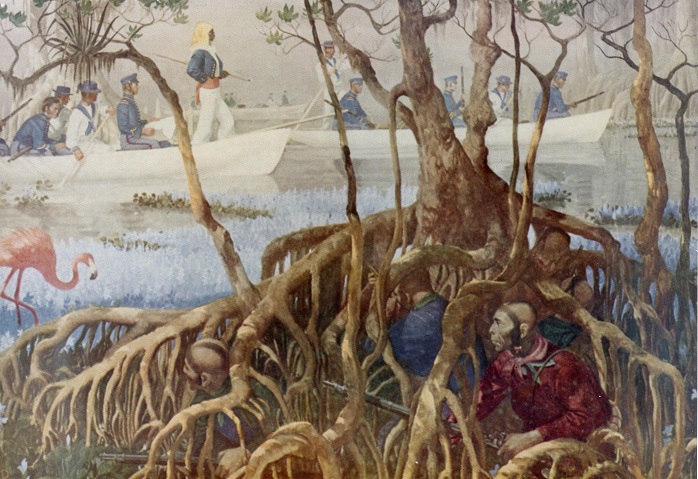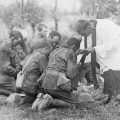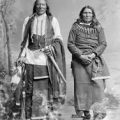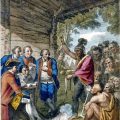
During the nineteenth century the United States engaged in three wars with the Seminole Indians in Florida: 1816 to about 1824; 1835 to 1842; and 1855 to1858.
Contrary to some popular opinions, there was no traditional overall governmental or political organization among the Seminole at this time. They tended to be politically organized around busk groups, each of which had its own medicine bundle on which the annual busk (green corn) ceremony was focused. Thus the military actions against the U.S. military did not have a single leader or coordinator.
The Third Seminole War (1855-1858) was over American encroachment on Seminole lands. The Seminole who were living in Florida at this time were refugees who had avoided removal to Oklahoma and were living in the Everglades. The war started when Billy Bowlegs retaliated against a crew of surveyors who had looted his camp. Three years later, many of the Seminole accepted the government’s terms of surrender and were removed to Oklahoma. However, some Seminole remained in Florida.
In 1855, army engineers and surveyors were sent into the Great Cypress Swamp to make note of the Seminole villages and their crops. They were under orders not to provoke the Seminole. However, some of the men stole crops and destroyed banana trees belonging to the Seminole under the leadership of Billy Bowlegs. When confronted about these incidents, the army offered neither apology nor compensation. As a result, 40 Seminole warriors began a series of raids known as the Third Seminole War.
The start of the Third Seminole War is summarized by Historian Harry Kersey in his book Pelts, Plumes, and Hides: White Traders Among the Seminole Indians, 1870-1930:
“the Third Seminole War was ignited by an act of flagrant vandalism against Chief Billy Bowlegs, perhaps with the intent of provoking him into an armed response which would justify military intervention.”
On the morning after the vandalism, Mikasuki Seminole warriors attacked the army camp, killing four soldiers and wounding four others. In response the army marched against the Seminole, outnumbering them by about 14 to 1.
In 1856, the Seminole in Indian Territory (Oklahoma) signed a treaty in which they agreed to send a delegation to Florida to persuade the Seminole in Florida to remove to Indian Territory.
In 1857, the American army surprised a small Seminole camp in Lake Okeechobee, capturing several women and children.
After a series of skirmishes, the final fight in the Third Seminole War came in 1857 when the Seminole camp of Billy Bowlegs was burned by the army. In addition, the soldiers took large quantities of corn and rice, as well as some oxen.
In 1858, the Americans met with Seminole leaders Billy Bowlegs and others to discuss an end to the Third Seminole War. The Americans offered Billy Bowlegs $7,500, $1,000 to each of the other Seminole leaders, $500 to each warrior, and $100 to each woman and child. The money was payable when the Seminole boarded the ship at Egmont Key to leave the state. The Seminole held council and agreed to accept the offer.
It is estimated that the United States spent between $20 million and $60 million on this war against the Seminole. The United States used 30,000 regular army troops and volunteers, as well as the Navy and some Marines.
Aftermath:
About 200 Seminole remained in Florida after Billy Bowlegs and his people had been removed to Indian Territory. The remaining Seminole withdrew from all willing contact with whites and existed for the next twenty years in relative isolation. The Muskogee band under the leadership of Chipco hid in the Lake Okeechobee area and could not be located by the Americans. Mikasuki leader Sam Jones refused to negotiate and his band remained deep in the Everglades. These two hundred were the cultural and biological ancestors of the Seminoles and Miccosukees of today.




Leave a Reply